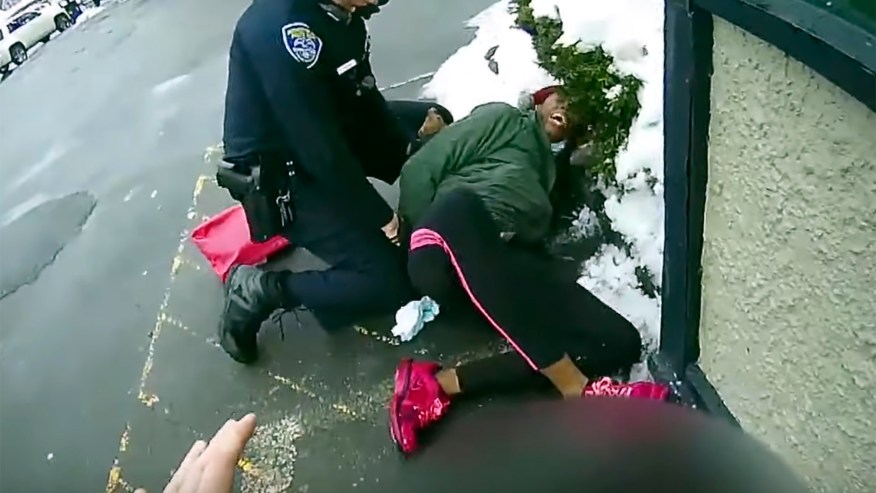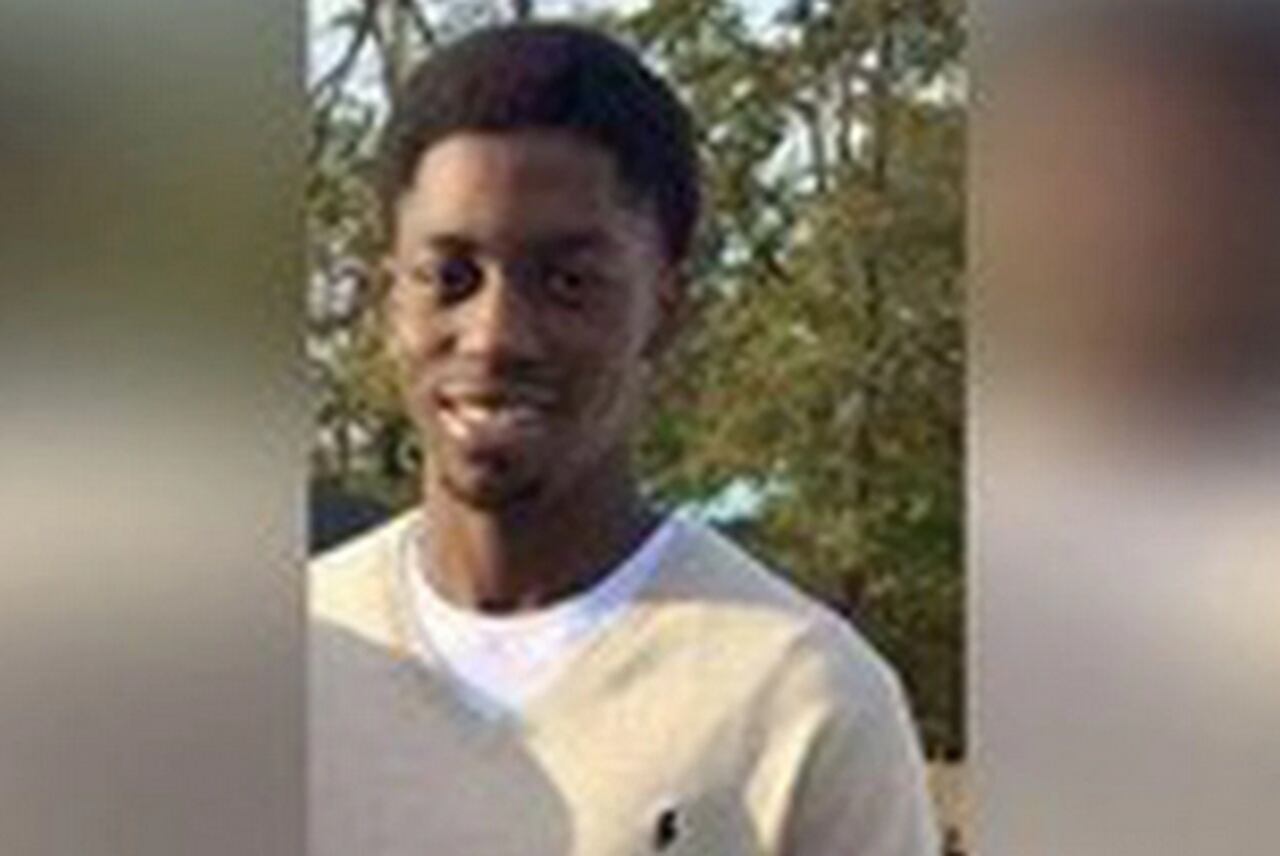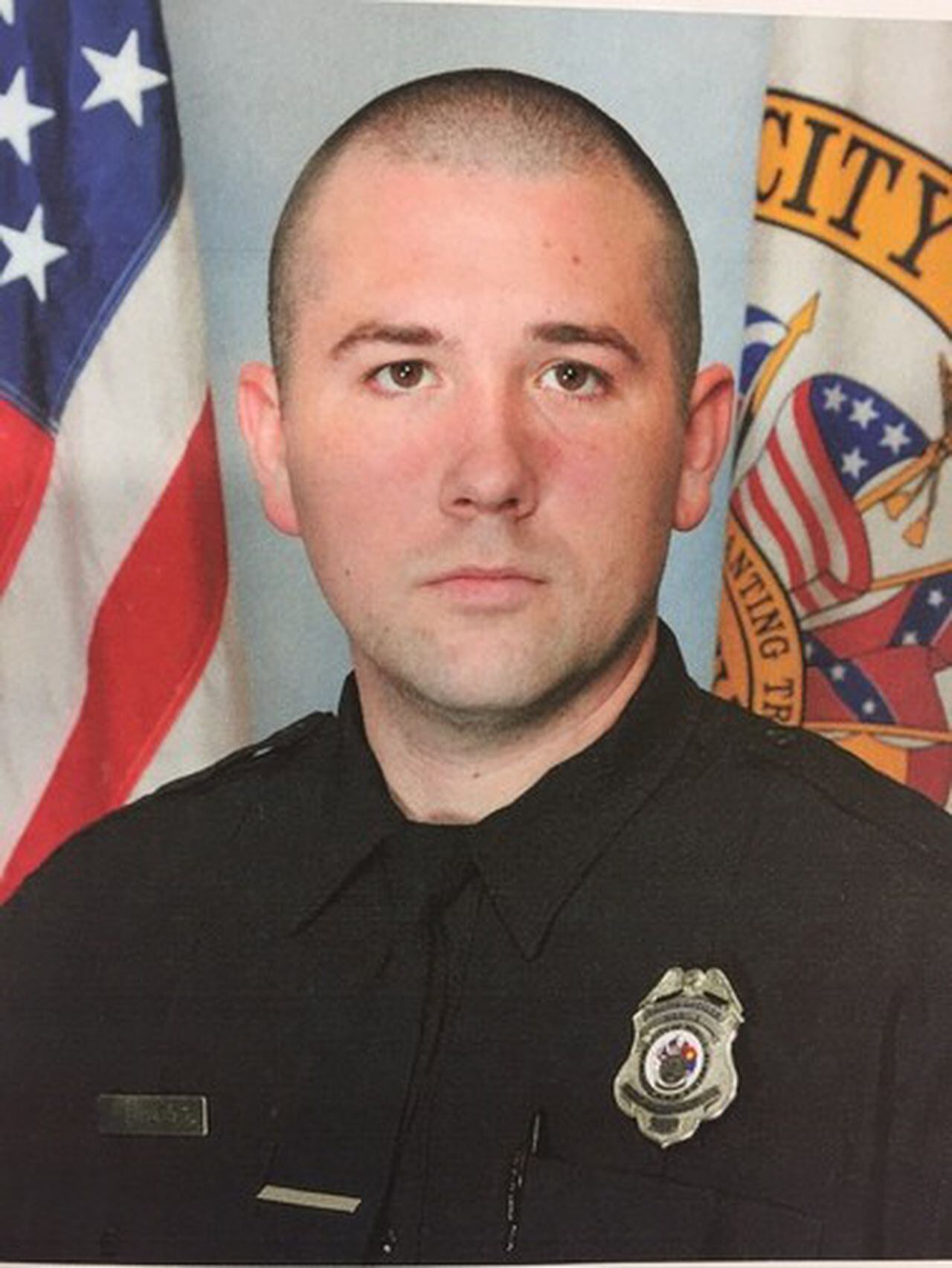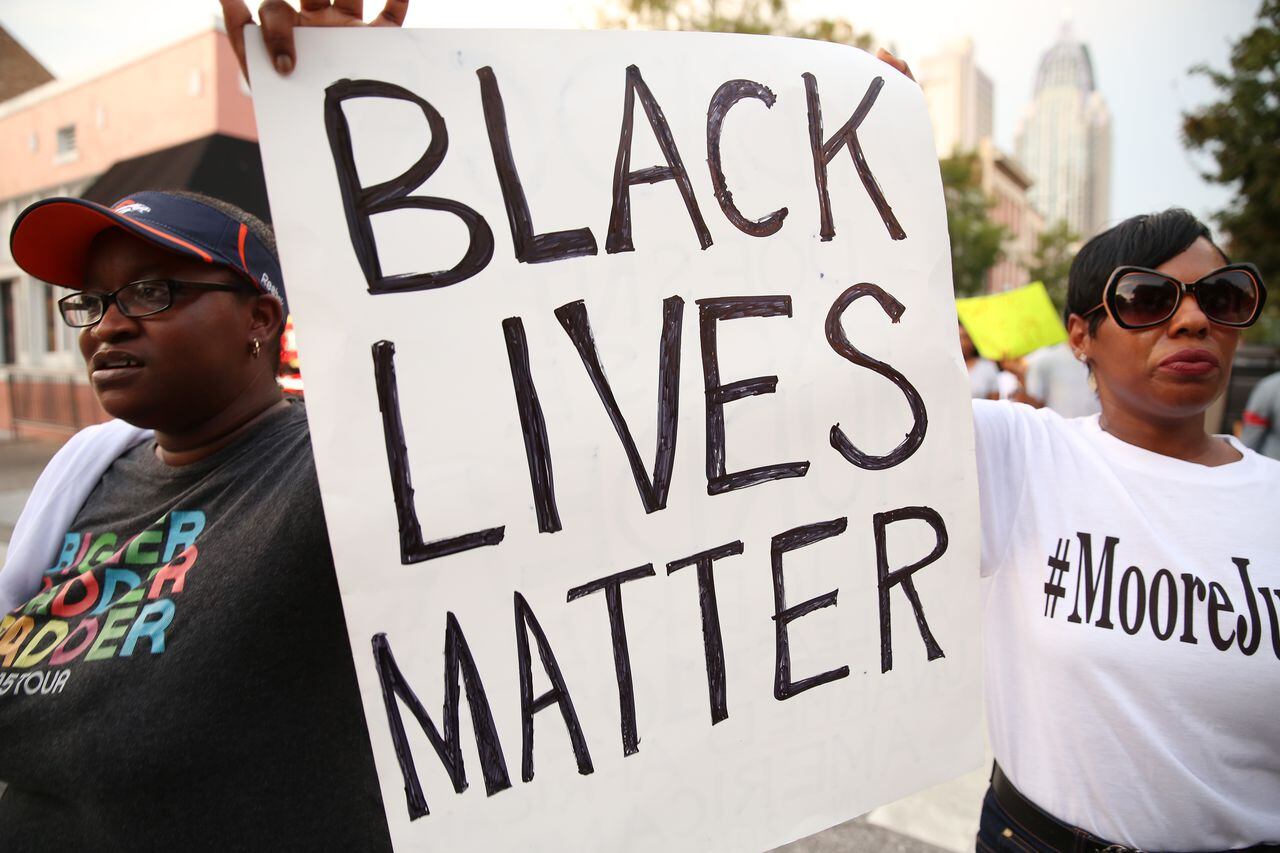Another under the radar killing.
https://outline.com/g7pxUC
$2.5 million settlement in Alabama police shooting but dispute remains: Did Black teen have a gun?
MARCH 23, 2021
Dozens marched from Bienville Square to Government Plaza in Mobile, Ala., on Thursday June 16, 2016 to protest Michael Moore's death. Moore was shot following a traffic stop Monday night. (Sharon Steinmann/
ssteinmann@al.com)
A Black teenager shot by a white officer police after a traffic stop in Alabama. No gun found at the scene. A gun, found later, underneath the body in the hospital. A gun without fingerprints. Demonstrations, contentious public hearings, a federal investigation.
Almost five years later, a $2.5 million settlement has brought an apparent end to a case that that began in Mobile in 2016 with the fatal shooting of Michael Moore by Officer Harold Hurst. The settlement by Hurst resolves a civil suit brought by Moore’s mother, Shunta Daugherty.
In a filing that paved the way for that resolution, U.S. District Judge Terry F. Moorer has evoked one of the case’s most troubling points: The allegation raised in the wake of the incident that police had planted a gun on Moore’s body after he was killed.
“Officer Hurst searched Moore after he was shot, but did not find a weapon,” Judge Moorer wrote in an opinion in September, as he weighed arguments that Hurst and the city should be immune from the claims against them. “On the scene, Officer Hurst told at least two officers that he found a magazine in Moore’s pocket, but after one officer pointed out that Officer Hurst appeared to be missing a magazine from his own carrier, he did not mention it again. Several officers also searched the area and never located a weapon. At this point, paramedics worked on Moore, placed him on a stretcher, and took him to an ambulance.”
The issue of the gun being found at the hospital caused public concern and fueled protests at the time. Hurst was later cleared by a grand jury and a review by the U.S. Department of Justice found that evidence “was insufficient to prove that the Officer willfully used excessive force.”
Speaking for the first time on some of the details of the case, Mobile officials on Monday rejected the notion that Moore did not have a gun.
James Barber, who was chief at the time, and City Attorney Ricardo Woods said questions about the gun and other evidence only arose because of a change in procedure -- which they said had been made to avoid provoking public outrage.
Barber also disputed the account of a missing magazine. “Now I spoke to Hurst briefly, that night,” said Barber. “He never said anything like that to me. Matter of fact, when I said there was a magazine on the ground, he said it was his.”
The judge’s account agreed with police that Moore was pulled over in a stolen Lexus and gave Officer Hurst a false driver license number that night in 2016. And Moorer acknowledged that some of the circumstances were unclear. “At this stage, the facts become heavily disputed,” he wrote of the stop, noting witness accounts of the fatal confrontation vary.
But in his key September ruling, which granted immunity to the city but left Hurst exposed, Moore painted a seemingly stark picture of the discovery of the gun:
“Moore was also searched by a paramedic who also did not find a gun. This search included lifting Moore’s shirt and pulling his shorts away from his body as captured by the body-camera video from Officer Portis,” wrote the judge. “Moore was taken by ambulance to the Medical Center. In the ambulance, Moore’s shirt and shorts were cut by paramedics and still no gun was found. Once in the hospital, Moore was transferred from the stretcher to a hospital bed. Numerous doctors, nurses, and other medical personnel worked on or observed Moore’s treatment. Still no gun was found.”
City attorney Ricardo Woods said this is not the damning factual account it appears to be.
“The insinuation is that the gun was somehow planted,” said Woods. “Even though we know that Officer Hurst and the two witnesses in the car saw Michael Moore with the gun. That’s their testimony. The problem is, the gun was found at the hospital.”
The judge’s opinion does not represent findings of fact, Woods said. Instead, Woods said, he was examining the city’s standpoint from a worst-case scenario, deciding whether they should be shielded from the lawsuit even when “taking the facts and evidence in the light most favorable to the Plaintiff.”
In that light, the judge continued:
“Eventually, after Moore was pronounced dead, a nurse found a firearm after she rolled Moore’s body over. The nurse notified the officer in the room, and the weapon was photographed and recovered. The gun had little to no blood on it despite a large pool of blood under Moore, and when tested for fingerprints, Moore’s fingerprints were not found on the gun or the bullets.”
Barber on Monday disagreed, he said the gun wasn’t lying there clean. “That gun was bloody,” he said.
Barber was police chief at the time and now is Executive Director of Public Safety in Mobile. He said the gun ended up at the hospital because of a decision made after the death of Michael Brown Jr. in 2014 in Ferguson, Mo., a fatal shooting which triggered violent clashes between demonstrators, rioters and police.
Prior to that, Barber said, the top priority of Hurst and other patrol officers after the shooting would have been to preserve the scene. Detectives at a shooting might have begun interviewing onlookers, but they too would have kept hands off the body and other evidence. Once paramedics had confirmed Moore’s death, crime scene investigators would have moved in and gathered evidence, including weaponry, with the body still in place.
Michael Moore was shot to death in 2016 during a traffic stop by a Mobile police officer.
But Barber said that in the Ferguson case, the fact that Brown’s body lay in the street fueled community outrage. So Mobile police and fire-rescue leaders changed their policy. If there was an officer-involved shooting, they weren’t going to leave a body in the street.
“Pre-Ferguson, Michael Moore would have lain there until the collection of evidence was complete and the body had been transported,” Barber said.
It also doesn’t signify much that Hurst didn’t find the gun at the scene, Barber said. Searching the scene and logging evidence wouldn’t have been his responsibility. And he said paramedics aren’t expected to search for weapons.
USA Medical Center (since renamed USA Health University Hospital) was a stone’s throw away. Because of the new policy, Moore was bundled into an ambulance as quickly as possible, even though he was presumed to be dead, and taken there for emergency treatment.
Moore, fresh from playing basketball, was wearing shorts. Being able to examine them certainly would help clarify whether they might have held a full-size automatic pistol at all, let alone unobtrusively, through such tumultuous events. Plaintiff filings have described them as having an elastic waistband. Barber said they had a drawstring that would have supported the gun. That discrepancy, like much else in the case, remains untested in the courtroom.
The clothing cut from Moore’s body was not preserved. Attorneys working for Daugherty discovered that in 2018 and sought to charge the hospital with spoliation of evidence. Attorneys for the medical center successfully argued that the hospital, as a state institution, was immune.
“Absolutely nobody should be transported with a gun,” said Barber. “We acknowledged early on that that was a failure on our part, to recover that gun on the scene before the body was transported. But I can also see exactly why it happened, given that the guys are trained one way and now the protocols are changed.”
After the last official review cleared Hurst and by extension the police department, Daugherty filed suit in 2017. The suit initially named Hurst, then was expanded to include the city and USA Medical Center. The Hospital was the first party to win a ruling that it was immune.
Mobile police officer Harold Hurst was on his way to report for his normal shift when he pulled over a stolen car driven by Michael Moore. Consequently he was not wearing a body camera during their fatal confrontation.MPD
That left two Hurst and the city, and attorneys for both parties argued they should be immune as well. In his pivotal ruling last fall, Moorer agreed that the city should be excluded from the case.
That left just Hurst, who faced claims of excessive force, wrongful death and negligence. Regarding excessive force, Hurst argued that he had qualified immunity, an established but somewhat controversial doctrine holding that government officials can have broad immunity from liability for harm done while acting within their official authority.
Hurst, no longer with the Mobile police department, also argued that as an agent of the state in 2016, he had immunity to the other two claims.
Moorer’s ruling was split. He agreed that state law gave Hurst immunity on the negligence claim, but not on wrongful death. He also denied Hurst the refuge of qualified immunity at this point.
The suit took a detour into the U.S. Court of Appeals for the 11th Circuit, with Hurst appealing Moorer’s denial of immunity. But on Feb. 4 the two sides filed a joint motion, saying they had reached an agreement.
Mario Williams, an attorney for Moore’s mother, told
AL.com that the case was settled for $2.5 million, with $1 million going to attorney fees. He said the settlement agreement explicitly allowed him to disclose that information but no more.
All parties, including his client, were prohibited from saying any more, he said. An attempt to reach attorneys who’d represented Hurst drew no response.
Woods said the settlement had been paid by an insurer that covered both the city and Hurst. But since the city had been excluded as a defendant, the settlement was on Hurst’s behalf. No city money was spent on the settlement, Barber and Woods said.
Having successfully argued it was immune to the claims of the suit, the city was a spectator to the settlement, not a party to it. Barber and Woods say they’d rather have had their day in court, a chance to show their evidence and shoot down the allegations of misconduct.
“I was dug in deeper than an Alabama tick not to settle the case,” said Barber.
“Same,” said Woods.
MICHAEL MOORE TIMELINE
Moore’s case prompted protests and controversy in Mobile, sweeping the city up in a national furor over race and policing.
On the evening of June 13, 2016, white Mobile police officer Harold Hurst was on his way to report for duty when he pulled over a car driven by black teenager Michael Moore. Because Hurst had not checked in for duty he was not wearing a body camera, and the circumstances under which he fatally shot Moore were immediately subject to intense debate.
The Mobile incident didn’t immediately make national news but others did. On July 5, the police shooting of a black man named Alton Sterling in Baton Rouge was captured on cell-phone video, creating a furor. One day later, video showed the fatal police shooting of Philando Castile in Falcon Heights, Minn.
On July 7, five Dallas police officers were killed and nine more injured in an ambush. Ten days later it happened again in Baton Rouge, where three officers were killed and three more injured. Protests of unjust policing combined with fears that police were being targeted to fuel nationwide tension.
Emotions ran high in Mobile with furious criticism of the way police, city and other officials were handling the Moore case. Demonstrations and rallies remained peaceful.
A timeline of some key developments:
June 17, 2016: A few days after Moore’s death, the Mobile Police Department issued a “fact sheet” and timeline describing the encounter between Moore and officer Harold Hurst. It said that Hurst, on his way to work, saw the Lexus driven by Moore make a left turn that nearly caused a wreck. He pulled over the car and began investigating. He learned the car had been reported stolen, and Moore initially gave him a false ID. He asked Moore to step out of the car.
Among other points, the fact sheet said Hurst had observed a pistol in the waistband of Moore’s pants and fired multiple times when Moore attempted to reach for it. He then fired again when Moore, now wounded and lying on the ground, again attempted to reach for the weapon.
The police sheet said that the gun was found to be stolen and that the car contained other stolen items “from recent vehicle burglaries.” Other than a safe of undisclosed value and an Exxon-Mobil gas card, these items were low-value clutter: An iPhone charger, a USA visor, a container of Axe body spray, a container of gum. To those skeptical of the police account, this was an attempt to prejudice the public’s view of a dead man with information that wasn’t relevant to the actual encounter. Mobile officials never really backed off the depiction of Moore as an armed threat involved in serious offenses.
June 18, 2016: Ronald Ali, then president of the Mobile County NAACP,
called for patience as investigations proceeded and said his organization was monitoring the case, indicating this was true at a state and national level.
June 21, 2016: Funeral services and a
“celebration of life” were held for Moore, who had turned 19 a few days before his death.
July 7, 2016: Mobile Police Chief James Barber said that Hurst
had returned to administrative duty following a period on administrative leave.
July 8, 2016: Despite a swirl of rumors raising fears of a large-scale disruption and/or an outsize response police response,
a Black Lives Matter rally and march proceeded without violence.
July 12, 2016: The Mobile City Council began a long and contentious discussion of
creating a citizen advisory council on police affairs.
July 13, 2016: At simultaneous rallies in downtown Mobile, one group of demonstrators spoke out against police brutality, while another held a vigil for police officers ambushed in Dallas.
July 18, 2016: Barber said results of investigations into Moore’s shooting
“should not be rushed” and that results were not imminent.
Michael Moore's mother, Shunta Daugherty, left, and cousin Gyda Larry attend a rally and march to protest police brutality organized by the Mobile Bay Socialist Alternative in downtown Mobile, Ala., on Friday July 22, 2016.Sharon Steinmann/AL.com
Nov. 1, 2016: Mobile County District Attorney Ashley Rich announced that a grand jury had determined that Hurst
should not face criminal charges. The jury found that “Officer Hurst acted reasonably, justifiably and in accordance with all applicable laws. The officer had a right to protect himself, and a duty to neutralize the threat to innocent civilians in this populated neighborhood.” Rich said the law prevents her from revealing details about the evidence presented to the grand jury or about its deliberations. This left one investigation in progress, being conducted by the FBI and the Department of Justice.
March 2017: Mayor Sandy Stimpson promoted Police Chief James Barber to the position of
Executive Director of Public Safety. Assistant Police Chief Lawrence Battiste, Stimpson’s pick as the new chief, was rapidly confirmed by the city council.
Sept. 1, 2017: The Mobile Police Department announced that Hurst, who had been on administrative leave,
had resigned.
Sept. 7, 2017: The Department of Justice reported that its Civil Rights Division
had closed its investigation of the case. “Given the totality of the circumstances, and conflicting eye-witness testimony, the government cannot disprove the Officer’s claim that he believed that Moore was reaching for a firearm, that he feared for his life, and that he made the split-second decision to defend it,” said the report.
Shortly after the Department of Justice announcement, Mobile Mayor Sandy Stimpson released a statement describing the DOJ decision as “the final in a series of investigations associated with the death of Mr. Moore, following parallel reviews by the Federal Bureau of Investigation and the Mobile County District Attorney’s Office.”
May 31, 2020: After the killing of George Floyd by police in Minneapolis,
demonstrations took place in Mobile. At these and other 2020 demonstrations, Michael Moore’s name continued to be evoked by participants.
Dozens marched from Bienville Square to Government Plaza in Mobile, Ala., on Thursday June 16, 2016 to protest Michael Moore's death. Moore was shot following a traffic stop Monday night. (Sharon Steinmann/
ssteinmann@al.com)
A Black teenager shot by a white officer police after a traffic stop in Alabama. No gun found at the scene. A gun, found later, underneath the body in the hospital. A gun without fingerprints. Demonstrations, contentious public hearings, a federal investigation.
Almost five years later, a $2.5 million settlement has brought an apparent end to a case that that began in Mobile in 2016 with the fatal shooting of Michael Moore by Officer Harold Hurst. The settlement by Hurst resolves a civil suit brought by Moore’s mother, Shunta Daugherty.
In a filing that paved the way for that resolution, U.S. District Judge Terry F. Moorer has evoked one of the case’s most troubling points: The allegation raised in the wake of the incident that police had planted a gun on Moore’s body after he was killed.
“Officer Hurst searched Moore after he was shot, but did not find a weapon,” Judge Moorer wrote in an opinion in September, as he weighed arguments that Hurst and the city should be immune from the claims against them. “On the scene, Officer Hurst told at least two officers that he found a magazine in Moore’s pocket, but after one officer pointed out that Officer Hurst appeared to be missing a magazine from his own carrier, he did not mention it again. Several officers also searched the area and never located a weapon. At this point, paramedics worked on Moore, placed him on a stretcher, and took him to an ambulance.”
The issue of the gun being found at the hospital caused public concern and fueled protests at the time. Hurst was later cleared by a grand jury and a review by the U.S. Department of Justice found that evidence “was insufficient to prove that the Officer willfully used excessive force.”
Speaking for the first time on some of the details of the case, Mobile officials on Monday rejected the notion that Moore did not have a gun.
James Barber, who was chief at the time, and City Attorney Ricardo Woods said questions about the gun and other evidence only arose because of a change in procedure -- which they said had been made to avoid provoking public outrage.
Barber also disputed the account of a missing magazine. “Now I spoke to Hurst briefly, that night,” said Barber. “He never said anything like that to me. Matter of fact, when I said there was a magazine on the ground, he said it was his.”
The judge’s account agreed with police that Moore was pulled over in a stolen Lexus and gave Officer Hurst a false driver license number that night in 2016. And Moorer acknowledged that some of the circumstances were unclear. “At this stage, the facts become heavily disputed,” he wrote of the stop, noting witness accounts of the fatal confrontation vary.
But in his key September ruling, which granted immunity to the city but left Hurst exposed, Moore painted a seemingly stark picture of the discovery of the gun:
“Moore was also searched by a paramedic who also did not find a gun. This search included lifting Moore’s shirt and pulling his shorts away from his body as captured by the body-camera video from Officer Portis,” wrote the judge. “Moore was taken by ambulance to the Medical Center. In the ambulance, Moore’s shirt and shorts were cut by paramedics and still no gun was found. Once in the hospital, Moore was transferred from the stretcher to a hospital bed. Numerous doctors, nurses, and other medical personnel worked on or observed Moore’s treatment. Still no gun was found.”
City attorney Ricardo Woods said this is not the damning factual account it appears to be.
“The insinuation is that the gun was somehow planted,” said Woods. “Even though we know that Officer Hurst and the two witnesses in the car saw Michael Moore with the gun. That’s their testimony. The problem is, the gun was found at the hospital.”
The judge’s opinion does not represent findings of fact, Woods said. Instead, Woods said, he was examining the city’s standpoint from a worst-case scenario, deciding whether they should be shielded from the lawsuit even when “taking the facts and evidence in the light most favorable to the Plaintiff.”
In that light, the judge continued:
“Eventually, after Moore was pronounced dead, a nurse found a firearm after she rolled Moore’s body over. The nurse notified the officer in the room, and the weapon was photographed and recovered. The gun had little to no blood on it despite a large pool of blood under Moore, and when tested for fingerprints, Moore’s fingerprints were not found on the gun or the bullets.”
Barber on Monday disagreed, he said the gun wasn’t lying there clean. “That gun was bloody,” he said.
Barber was police chief at the time and now is Executive Director of Public Safety in Mobile. He said the gun ended up at the hospital because of a decision made after the death of Michael Brown Jr. in 2014 in Ferguson, Mo., a fatal shooting which triggered violent clashes between demonstrators, rioters and police.
Prior to that, Barber said, the top priority of Hurst and other patrol officers after the shooting would have been to preserve the scene. Detectives at a shooting might have begun interviewing onlookers, but they too would have kept hands off the body and other evidence. Once paramedics had confirmed Moore’s death, crime scene investigators would have moved in and gathered evidence, including weaponry, with the body still in place.
Michael Moore was shot to death in 2016 during a traffic stop by a Mobile police officer.
But Barber said that in the Ferguson case, the fact that Brown’s body lay in the street fueled community outrage. So Mobile police and fire-rescue leaders changed their policy. If there was an officer-involved shooting, they weren’t going to leave a body in the street.
“Pre-Ferguson, Michael Moore would have lain there until the collection of evidence was complete and the body had been transported,” Barber said.
It also doesn’t signify much that Hurst didn’t find the gun at the scene, Barber said. Searching the scene and logging evidence wouldn’t have been his responsibility. And he said paramedics aren’t expected to search for weapons.
USA Medical Center (since renamed USA Health University Hospital) was a stone’s throw away. Because of the new policy, Moore was bundled into an ambulance as quickly as possible, even though he was presumed to be dead, and taken there for emergency treatment.
Moore, fresh from playing basketball, was wearing shorts. Being able to examine them certainly would help clarify whether they might have held a full-size automatic pistol at all, let alone unobtrusively, through such tumultuous events. Plaintiff filings have described them as having an elastic waistband. Barber said they had a drawstring that would have supported the gun. That discrepancy, like much else in the case, remains untested in the courtroom.
The clothing cut from Moore’s body was not preserved. Attorneys working for Daugherty discovered that in 2018 and sought to charge the hospital with spoliation of evidence. Attorneys for the medical center successfully argued that the hospital, as a state institution, was immune.
“Absolutely nobody should be transported with a gun,” said Barber. “We acknowledged early on that that was a failure on our part, to recover that gun on the scene before the body was transported. But I can also see exactly why it happened, given that the guys are trained one way and now the protocols are changed.”
After the last official review cleared Hurst and by extension the police department, Daugherty filed suit in 2017. The suit initially named Hurst, then was expanded to include the city and USA Medical Center. The Hospital was the first party to win a ruling that it was immune.
Mobile police officer Harold Hurst was on his way to report for his normal shift when he pulled over a stolen car driven by Michael Moore. Consequently he was not wearing a body camera during their fatal confrontation.MPD
That left two Hurst and the city, and attorneys for both parties argued they should be immune as well. In his pivotal ruling last fall, Moorer agreed that the city should be excluded from the case.
That left just Hurst, who faced claims of excessive force, wrongful death and negligence. Regarding excessive force, Hurst argued that he had qualified immunity, an established but somewhat controversial doctrine holding that government officials can have broad immunity from liability for harm done while acting within their official authority.
Hurst, no longer with the Mobile police department, also argued that as an agent of the state in 2016, he had immunity to the other two claims.
Moorer’s ruling was split. He agreed that state law gave Hurst immunity on the negligence claim, but not on wrongful death. He also denied Hurst the refuge of qualified immunity at this point.
The suit took a detour into the U.S. Court of Appeals for the 11th Circuit, with Hurst appealing Moorer’s denial of immunity. But on Feb. 4 the two sides filed a joint motion, saying they had reached an agreement.
Mario Williams, an attorney for Moore’s mother, told
AL.com that the case was settled for $2.5 million, with $1 million going to attorney fees. He said the settlement agreement explicitly allowed him to disclose that information but no more.
All parties, including his client, were prohibited from saying any more, he said. An attempt to reach attorneys who’d represented Hurst drew no response.
Woods said the settlement had been paid by an insurer that covered both the city and Hurst. But since the city had been excluded as a defendant, the settlement was on Hurst’s behalf. No city money was spent on the settlement, Barber and Woods said.
Having successfully argued it was immune to the claims of the suit, the city was a spectator to the settlement, not a party to it. Barber and Woods say they’d rather have had their day in court, a chance to show their evidence and shoot down the allegations of misconduct.
“I was dug in deeper than an Alabama tick not to settle the case,” said Barber.
“Same,” said Woods.
MICHAEL MOORE TIMELINE
Moore’s case prompted protests and controversy in Mobile, sweeping the city up in a national furor over race and policing.
On the evening of June 13, 2016, white Mobile police officer Harold Hurst was on his way to report for duty when he pulled over a car driven by black teenager Michael Moore. Because Hurst had not checked in for duty he was not wearing a body camera, and the circumstances under which he fatally shot Moore were immediately subject to intense debate.
The Mobile incident didn’t immediately make national news but others did. On July 5, the police shooting of a black man named Alton Sterling in Baton Rouge was captured on cell-phone video, creating a furor. One day later, video showed the fatal police shooting of Philando Castile in Falcon Heights, Minn.
On July 7, five Dallas police officers were killed and nine more injured in an ambush. Ten days later it happened again in Baton Rouge, where three officers were killed and three more injured. Protests of unjust policing combined with fears that police were being targeted to fuel nationwide tension.
Emotions ran high in Mobile with furious criticism of the way police, city and other officials were handling the Moore case. Demonstrations and rallies remained peaceful.
A timeline of some key developments:
June 17, 2016: A few days after Moore’s death, the Mobile Police Department issued a “fact sheet” and timeline describing the encounter between Moore and officer Harold Hurst. It said that Hurst, on his way to work, saw the Lexus driven by Moore make a left turn that nearly caused a wreck. He pulled over the car and began investigating. He learned the car had been reported stolen, and Moore initially gave him a false ID. He asked Moore to step out of the car.
Among other points, the fact sheet said Hurst had observed a pistol in the waistband of Moore’s pants and fired multiple times when Moore attempted to reach for it. He then fired again when Moore, now wounded and lying on the ground, again attempted to reach for the weapon.
The police sheet said that the gun was found to be stolen and that the car contained other stolen items “from recent vehicle burglaries.” Other than a safe of undisclosed value and an Exxon-Mobil gas card, these items were low-value clutter: An iPhone charger, a USA visor, a container of Axe body spray, a container of gum. To those skeptical of the police account, this was an attempt to prejudice the public’s view of a dead man with information that wasn’t relevant to the actual encounter. Mobile officials never really backed off the depiction of Moore as an armed threat involved in serious offenses.
June 18, 2016: Ronald Ali, then president of the Mobile County NAACP,
called for patience as investigations proceeded and said his organization was monitoring the case, indicating this was true at a state and national level.
June 21, 2016: Funeral services and a
“celebration of life” were held for Moore, who had turned 19 a few days before his death.
July 7, 2016: Mobile Police Chief James Barber said that Hurst
had returned to administrative duty following a period on administrative leave.
July 8, 2016: Despite a swirl of rumors raising fears of a large-scale disruption and/or an outsize response police response,
a Black Lives Matter rally and march proceeded without violence.
July 12, 2016: The Mobile City Council began a long and contentious discussion of
creating a citizen advisory council on police affairs.
July 13, 2016: At simultaneous rallies in downtown Mobile, one group of demonstrators spoke out against police brutality, while another held a vigil for police officers ambushed in Dallas.
July 18, 2016: Barber said results of investigations into Moore’s shooting
“should not be rushed” and that results were not imminent.
Michael Moore's mother, Shunta Daugherty, left, and cousin Gyda Larry attend a rally and march to protest police brutality organized by the Mobile Bay Socialist Alternative in downtown Mobile, Ala., on Friday July 22, 2016.Sharon Steinmann/AL.com
Nov. 1, 2016: Mobile County District Attorney Ashley Rich announced that a grand jury had determined that Hurst
should not face criminal charges. The jury found that “Officer Hurst acted reasonably, justifiably and in accordance with all applicable laws. The officer had a right to protect himself, and a duty to neutralize the threat to innocent civilians in this populated neighborhood.” Rich said the law prevents her from revealing details about the evidence presented to the grand jury or about its deliberations. This left one investigation in progress, being conducted by the FBI and the Department of Justice.
March 2017: Mayor Sandy Stimpson promoted Police Chief James Barber to the position of
Executive Director of Public Safety. Assistant Police Chief Lawrence Battiste, Stimpson’s pick as the new chief, was rapidly confirmed by the city council.
Sept. 1, 2017: The Mobile Police Department announced that Hurst, who had been on administrative leave,
had resigned.
Sept. 7, 2017: The Department of Justice reported that its Civil Rights Division
had closed its investigation of the case. “Given the totality of the circumstances, and conflicting eye-witness testimony, the government cannot disprove the Officer’s claim that he believed that Moore was reaching for a firearm, that he feared for his life, and that he made the split-second decision to defend it,” said the report.
Shortly after the Department of Justice announcement, Mobile Mayor Sandy Stimpson released a statement describing the DOJ decision as “the final in a series of investigations associated with the death of Mr. Moore, following parallel reviews by the Federal Bureau of Investigation and the Mobile County District Attorney’s Office.”
May 31, 2020: After the killing of George Floyd by police in Minneapolis,
demonstrations took place in Mobile. At these and other 2020 demonstrations, Michael Moore’s name continued to be evoked by participants.



www.themarshallproject.org

leaning against a wall and holding a red gas can. After turning his flashlight on Olivas, Officer Elliott allegedly shouted to Sergeant Jefferson and Officer Guadarrama, “If we tase him, he is going to light on fire.”








www.axios.com




